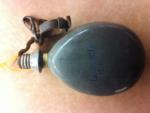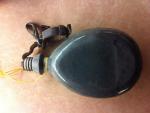-
Posts
4,862 -
Joined
-
Last visited
-
Days Won
15
Content Type
Profiles
Forums
Blogs
Gallery
Events
Store
Everything posted by peter monahan
-

King crown...... please help
peter monahan replied to kitinsignia's topic in The Great War 1914 to 1918
Kit This may have been custom made for the memorial it is on. What size is it? -

World War 1 colour Postcards
peter monahan replied to Kev in Deva's topic in The Great War 1914 to 1918
-

Whizz bangs and Jack Johnsons ... nicknames
peter monahan replied to IrishGunner's topic in The Great War 1914 to 1918
Just came across "Schlanke Emma" or 'Skinny Emma' for a 305mm howitzer, with shells weighing some 380kg, manufactures by Skoda. Also typical soldier humour! -

New London Gazette website
peter monahan replied to dmghk's topic in Great Britain: Orders, Gallantry, Campaign Medals
I agree - not at all helpful for we oldsters used to the old regime! -
On a related note, I think, there is a Canadian artist/writer/actor chap who has begun a project to remember ALL the dead of World war One as well. Years ago he had the names of all 67,000 of Canada's First war dead projected on the side of Canada House in Trafalgar Square over a 7 night period. Her Majesty was present for the first night. He has done this in other places and the current plan is to compile and display the names of the soldiesr of all the belligerent powers who wish to participate. It looks as if he may lose the Russians over the Crimean mess - apparently Putin was very bullish on the project but he has recruited 26 nations thus far. Details of the project are available here: http://theworldremembers.ca/about-the-world-remembers/
-

Posthumous awards?
peter monahan replied to Chris Boonzaier's topic in Great Britain: Orders, Gallantry, Campaign Medals
I wonder whether the fact that he survuved the action, even by a day, meant that it wasn't considered 'posthumous' in the same way that an award tio someone who ddidn';t survive the action would be. Here's an interesting tidbit too. Haven't read the warrant(s) for the VC, but I assume its probably correct, as the article does cite the relevant Army order: A Guide to British Awards for Gallantry or Meritorious Service in WW1 Originally the Royal Warrant for the award did not cover the issue of the award posthumously. Although this was not officially changed in the warrant until after the First World War, a quarter of those recipients who were awarded the Victoria Cross during WW1 were killed as they carried out their deed of valour. found at: http://www.greatwar.co.uk/medals/ww1-gallantry-awards.htm -
Already doing that with the Royal Canadian Legion, but good on ya to suggest it!
-

Posthumous awards?
peter monahan replied to Chris Boonzaier's topic in Great Britain: Orders, Gallantry, Campaign Medals
The first posthumous Military Cross was that awarded to Captain Herbert Westmacott (491354), Grenadier Guards for gallantry in Northern Ireland during the period 1 February 1980 to 30 April 1980 [The London Gazette: (Supplement) no. 48346. p. 14608. 20 October 1980.] [Wikipedia]. So Absolon was likely the first posthumous MM, I'd guess. -

A Very,very, very old soldier
peter monahan replied to Ulsterman's topic in Great Britain: Orders, Gallantry, Campaign Medals
Well said, Ulsterman. The bits about Steve, I mean. If I weren't so naturally reticent and modest - I'm Canadian too - I'd tell you that 'huzzah Canada' is redundant. We already know we're great! -

I Have No Remorse.
peter monahan commented on Brian Wolfe's blog entry in News From the Home Office.
And here I was thinking you were afraid of thigh bones! Silly me. -
Looking at a German porcelain pipe, inscribed 'Kriegschule 1899-1900' on the back of the bowl. On the front is a coat of arms: a wreath of oak leaves, crossed swords, hilts down, a black knights helmet and three intials, which I think read 'E V A'. Anyone know wher I might find a list of the Kriegschules for that period and whether there is any chance of getting lists of graduates? Peter
-
Thanks, Chris. I only 'processed' the "17." marking as a late war manufacture date after I made the post. I wondered about the covers too - did some come without, late war, or did it get so ratty somebody stripped it off and threw it away. This pievce came with an aluminum mess kit: cover/plate/fry pan + two pots/bowls + a two piece pierced wind screen and post support and a handle for the pots and can of solid fuel. I flet much better about breakimng the leather strap holding it all together once I established that it was Boy Scout - and not military!
-

georgian gorget
peter monahan replied to blueman's topic in Great Britain: Militaria: Badges, Uniforms & Equipment
I hadn't realized the Asians were making these up for the AWI re-enactors. None of tht gents I know would wear one that crude, as there are fairly good copies out there too. I stand corrected. -

Victoria Cross replica
peter monahan replied to kjf101's topic in Great Britain: Orders, Gallantry, Campaign Medals
I agree, Mike. I have handled, briefly and years ago, two VCs and a couple of the eary Hancock copies and, besides the cachet of owning a copy made by the guys who make the real ones, the quality is beutiful. Were I a musuem or a collector who wanted a copy to stand in for all the real ones 'my' regiment had won, I'd buy a Hancock copy. I'm guessing they won't depreciate either and suspect the umbering is to prevent the crooks trying to 'convert' them into 'real' ones. My two cents worth. Peter -

United States Question about KiffinRockwell
peter monahan replied to The Prussian's topic in The Great War 1914 to 1918
Sorry! -
I was at a conference on WWI on Saturday and had a session by a Canadian group named CANADIGM who are busy working in France to document, with photography and 3D laser scans the carvings in some of the old 'souterraines' and tunnels in the Vimy area. The plan is to reproduce some of them and sent them cross Canada on tour. Fascinating stuff. Here's a link to one news story, with shots of a couple badges: http://www.ctvnews.ca/underground-carvings-memorialize-canadian-soldiers-1.651603 Several of the badges we saw in the presentation were carved by a tunneller who was a stone mason to the Royal Family before he came to Canada and joined the army. beautiful work and the reproduction techniques - laser - allows them to be copied so well that a pencil mark on thwe stone would change the thickness of the scan. And all buried for 100 years under tons of garbage in the back yard of French farm!
-

georgian gorget
peter monahan replied to blueman's topic in Great Britain: Militaria: Badges, Uniforms & Equipment
Almost certainly not a British Army. Officer's gorget were engraved with the royal cipher and other details. Possibly made for the Indian trade - North American, I mean: relatively crude, but aping the style of gorgets worn by officers and presented to chiefs. That would be my guess, anyway. -

The Tamgha-i-Difaa, Pakistan's General Service Medal
peter monahan replied to Brian Wolfe's topic in South Asia
I think you've done a good job of presenting the facts, as far as can be known be non-specialists, fairly and certainly clearly. Thanks for taking the time! Peter -

British helmets collection
peter monahan replied to pjac's topic in Great Britain: Militaria: Badges, Uniforms & Equipment
No, not our sort at all! Still, some mothers do have 'em and I suppose every large organization - including armies - gets its share. An interesting side note on the Empire and its administration. Peter




